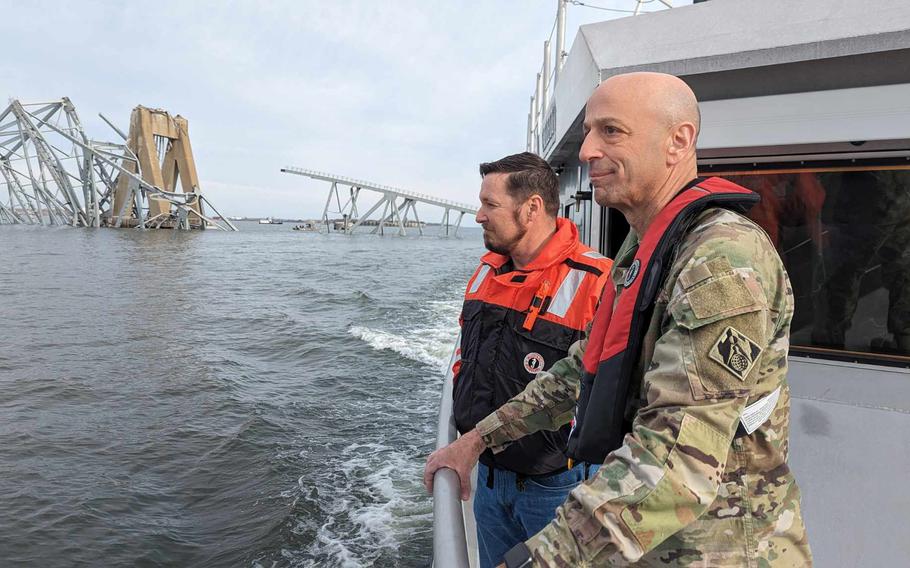
U.S. Army Corps of Engineers Chief of Engineers Lt. Gen. Scott Spellmon views damage of the fallen Francis Scott Key Bridge that collapsed in Baltimore, Tuesday, March 26, 2024. USACE will lead the effort to clear the channel as part of the larger interagency recovery effort to restore operations at the Port of Baltimore. (David Adams/U.S. Army Corps of Engineers)
More than 1,100 members of the U.S. Army Corps of Engineers will assist in clearing the Fort McHenry Channel in Maryland’s Patapsco River following the collapse Tuesday of the Francis Scott Key Bridge.
The corps’ Baltimore District activated its Emergency Operations Center to provide support to local, state and federal agencies following the bridge’s collapse when the container ship Dali slammed into a pillar at around 1:30 a.m. Tuesday. The corps will lead the effort to clear the federal channel, a Corps of Engineers news release said.
The corps is providing:
Certified underwater assessment capabilities by structural professional engineers, remotely operated vehicle and sonar.
Structural engineering support, including certified bridge safety inspectors and urban search and rescue structural technical specialists.
Waterway debris management, led by USACE debris removal vessel Reynolds, which patrols the waters of the Baltimore Harbor and Patapsco River for drift and debris that could be hazardous to navigation.
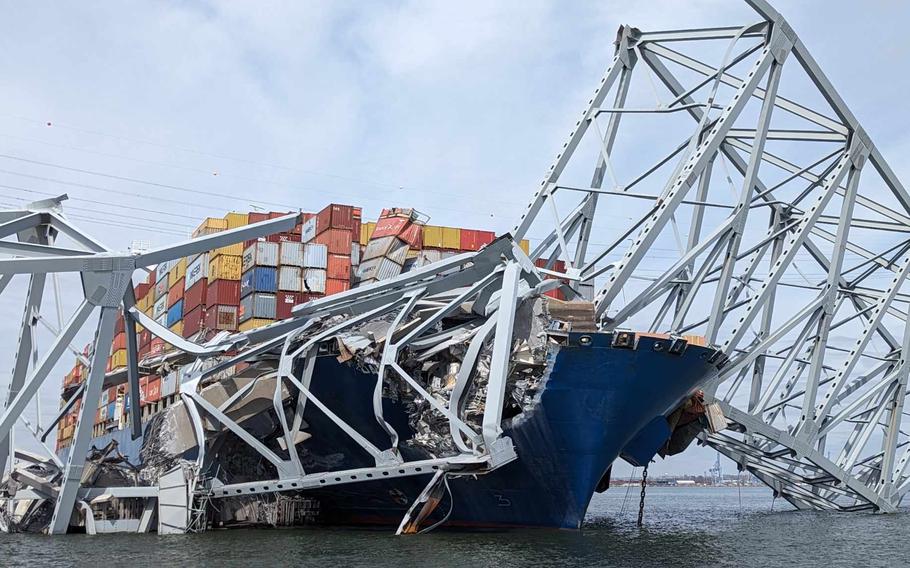
U.S. Army Corps of Engineers staff onboard Hydrographic Survey Vessel Catlett observe the damage resulting from the collapse of the Francis Scott Key Bridge in Baltimore, Tuesday, March 26, 2024. (David Adams/U.S. Army Corps of Engineers)
USACE also is poised to provide hydrographic and topographic surveying via the Catlett, a 61-foot survey vessel that actively supports the Baltimore District’s Navigation Branch. Additional vessels are prepared to join efforts as needed for waterway debris management.
“Our thoughts are with those impacted by the tragic collapse of the Francis Scott Key Bridge,” Baltimore District Commander Col. Estee Pinchasin said in the release. “Our Emergency Managers are closely monitoring the incident and coordinating with partner agencies for any potential support requests.”
At least eight people went into the water when the bridge collapsed Tuesday. Two were rescued, but six others — part of a construction crew that had been filling potholes on the bridge — were missing and presumed dead. A search for their bodies was underway Wednesday morning, according to Maryland State Police spokesperson Elena Russo, the Associated Press reported.
The U.S. Coast Guard on Tuesday assisted local, state and federal agencies in the rescue mission, with response boat crews from Coast Guard Stations Curtis Bay and Annapolis deployed, a news release from the service said.
Federal and state officials said the crash appeared to be an accident. The National Transportation Safety Board is investigating, and ship traffic entering and leaving the Port of Baltimore was suspended indefinitely, AP reported.
The Associated Press contributed to this report.
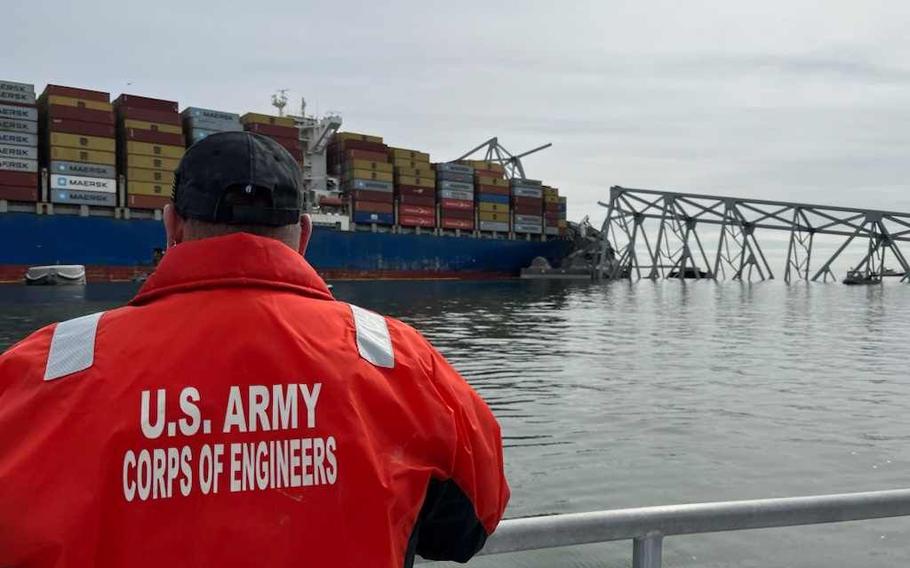
U.S. Army Corps of Engineers navigation staff observe the damage resulting from the collapse of the Francis Scott Key Bridge in Baltimore, Tuesday, March 26, 2024. (David Adams/U.S. Army Corps of Engineers)
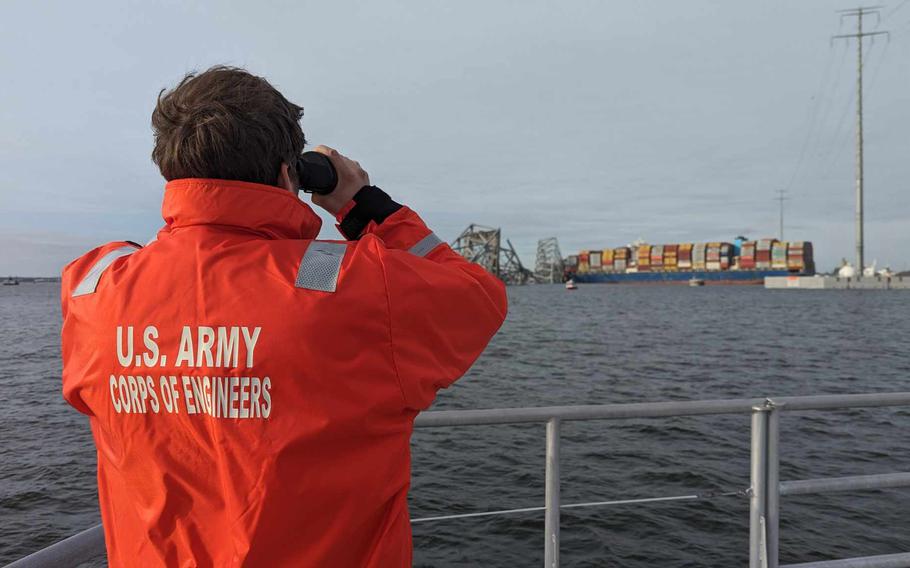
U.S. Army Corps of Engineers Navigation staff observe the damage resulting from the collapse of the Francis Scott Key Bridge in Baltimore, Tuesday, March 26, 2024. (David Adams/U.S. Army Corps of Engineers)
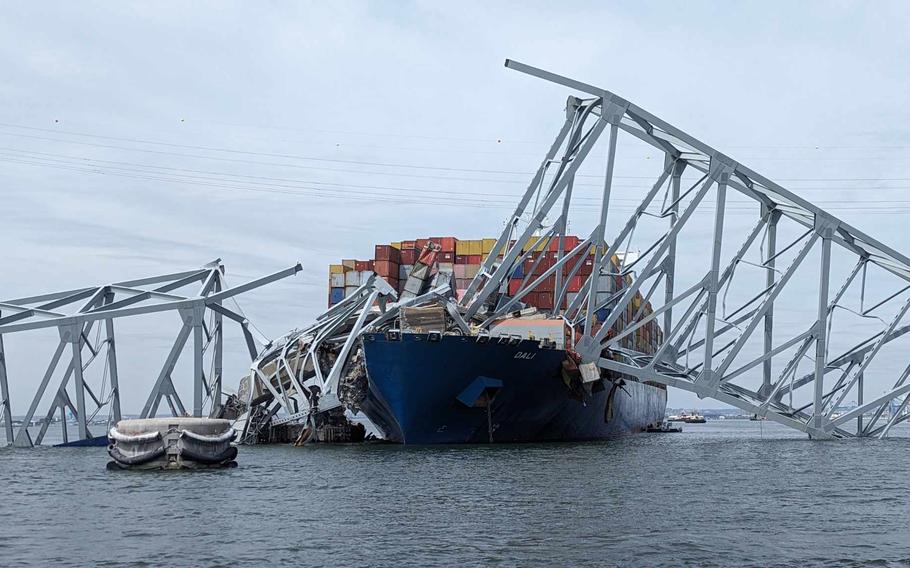
U.S. Army Corps of Engineers staff onboard Hydrographic Survey Vessel Catlett observe the damage resulting from the collapse of the Francis Scott Key Bridge in Baltimore, Tuesday, March 26, 2024. (David Adams/U.S. Army Corps of Engineers)